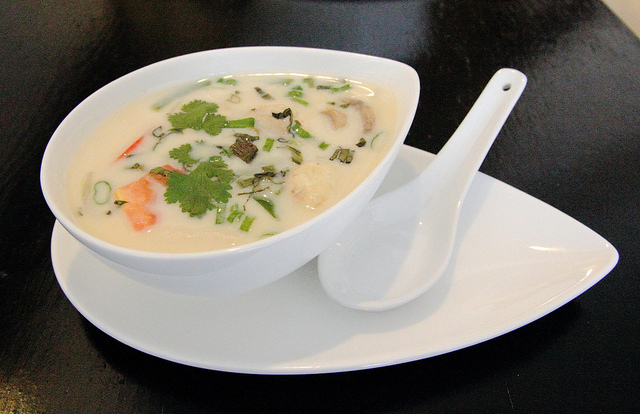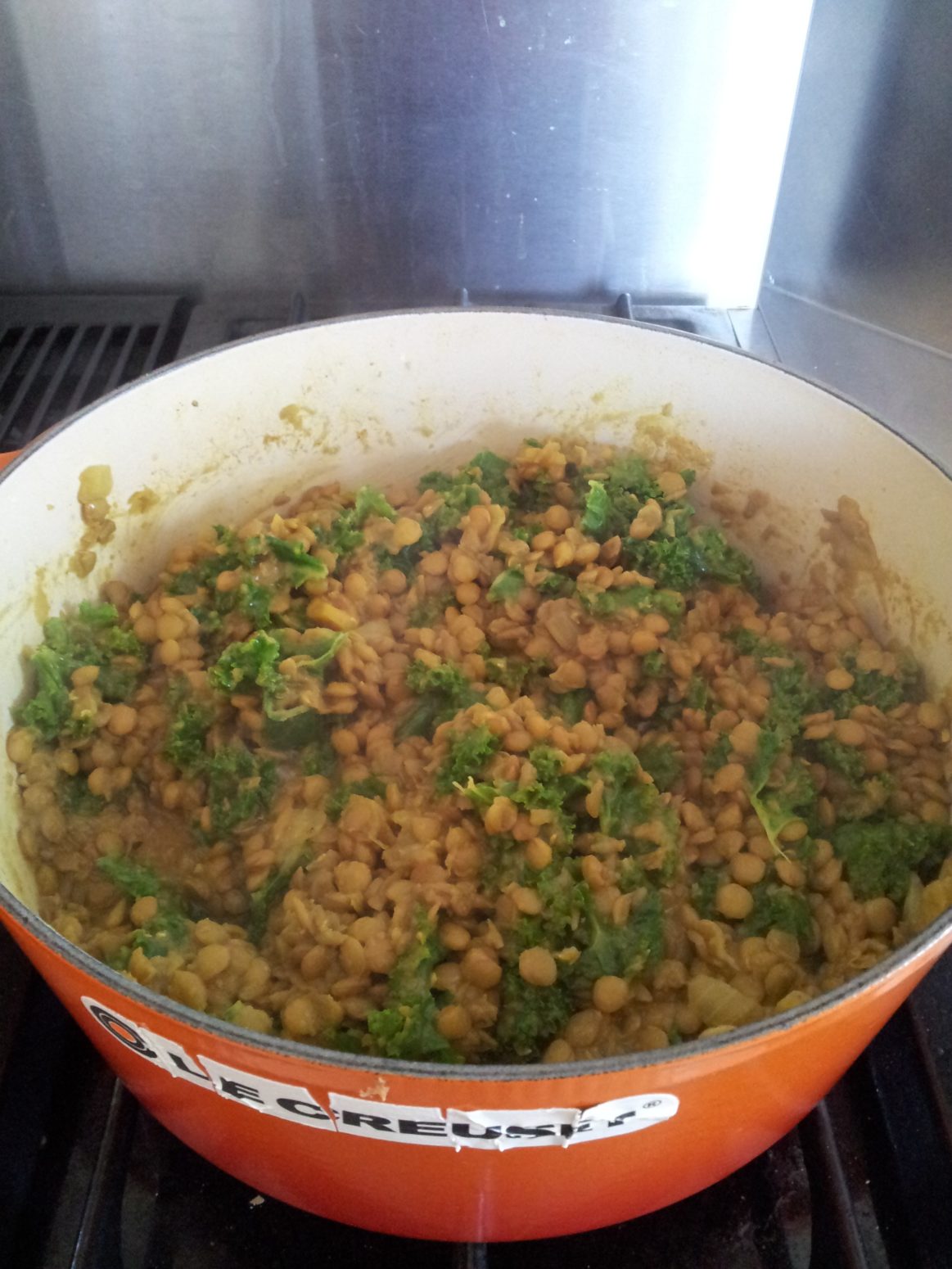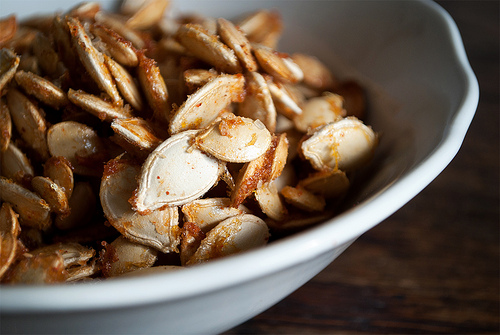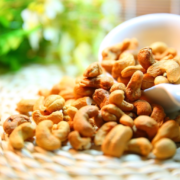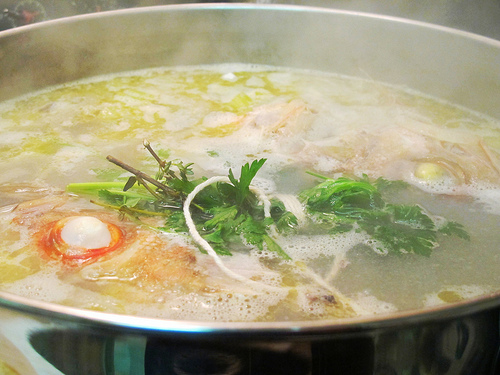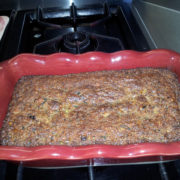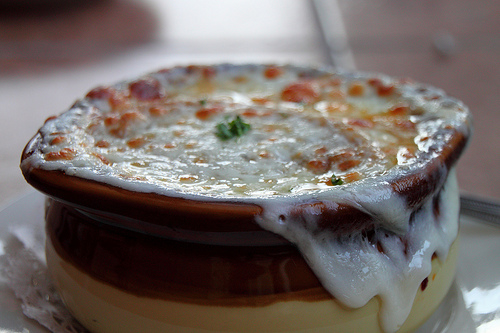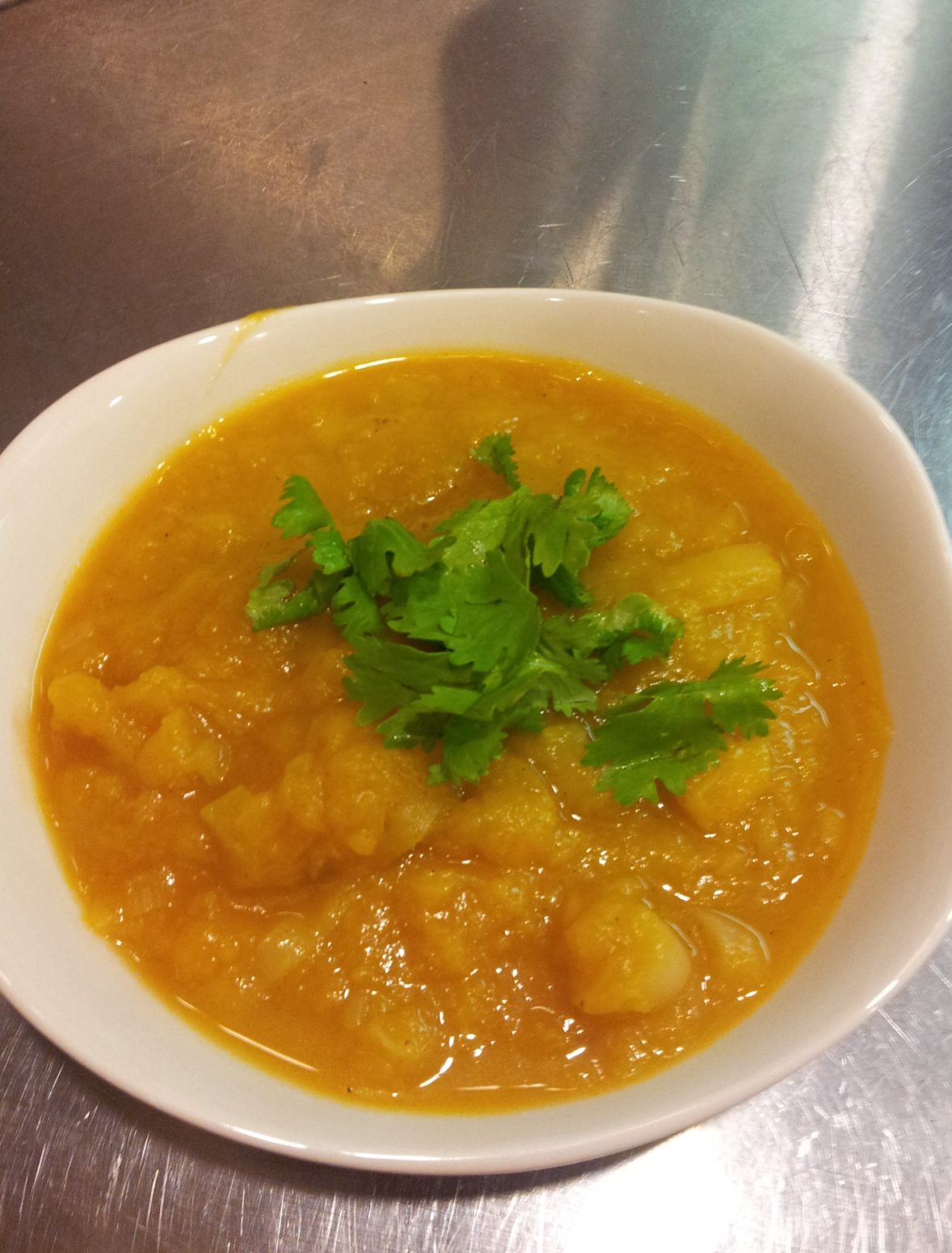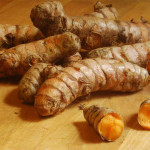Thai Coconut Soup
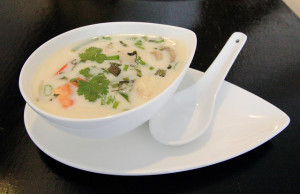
A traditional Thai coconut soup, called Tom Kha Gai, that far outdoes your basic chicken soup in flavor and quality. It is perfect for cold winter days and preventing colds and flus due to it’s immune supportive qualities. Making the traditional soup may require a trip to an Asian grocery store but this recipe can be easily adapted to ingredients found in most anywhere (this is what I often do when I make it last minute). I do sometimes buy extra lemongrass, kafir lime leaves and galangal ahead of time and chop and freeze them separately for future use. They keep quite well.
Made with many fresh ingredients, this flavorful soup blends a combination of savory, spicy and sweet with a refreshing floral and citrus quality. Is naturally gluten, dairy and soy-free and can be easily adapted to be pescatarian (fish stock, shrimp instead of chicken) or vegan (veggie stock, tofu for chicken, tamari or soy sauce for fish sauce). Thai kitchen makes a fish sauce that is guaranteed gluten-free, though most fish sauces do not naturally contain gluten. Be sure to check this if you need to.
Ingredients:
1 can coconut milk
2-3 cups chicken or other stock (see this link for a simple homemade broth recipe that is high in nutrients and minerals)
salt to taste
1-3 Tablespoons fish sauce (This really adds to the flavor of the soup and is pungent . I do omit it in a pinch if I don’t have it. You’ll need more salt though.)
2 stalks fresh lemongrass (if necessary, can substitute the juice of one lemon and some lemon and lime zest if possible)
3 red shallots, peeled and chunked (I often use any color onion instead)
5 cloves garlic, chopped
1-3 inch chunk of galangal root, chunked or minced (this makes the flavor but ginger is in the same family and can be substituted if necessary)
3-5 kaffir lime leaves, coarsely chopped (you can substitute the juice of one lime with a little of the zest if necessary)
1-2 cups chopped mushrooms (I often use shiitakes for their excellent immune supportive qualities)
1 Tablespoon lime juice (more if compensating – see notes above)
1 handful fresh cilantro, chopped
1 pound boneless skinless chicken thighs, cut to 1″ pieces (you can use breasts, but the thighs are moister and tastier). You can also use bone in chicken parts. It will just be a bit messier when you eat it.
1-4 dried birds eye chili peppers crushed or 1/2- 1 teaspoon crushed red pepper flakes. Use these to taste and note that the more crushed they are, the spicier the soup will taste. Also, the longer they cook or sit in the soup, the spicier it will be. Sometimes the leftovers taste hotter the next day after sitting in the soup all night.
1-3 Tablespoons honey
Optional veggies: chopped green beans, sliced carrots, sliced red or yellow peppers, red garnet yams, fresh basil
Optional serving suggestion: serve over white or brown jasmine rice (cook simultaneously or before making soup).
Directions:
1. Combine in a large pot: broth, galangal (or ginger), lemongrass (if using lemon save until step 4) and mushrooms. Boil for 10 minutes. (Make your rice at the same time if you’d like to serve the soup over rice)
2. Add: chicken, lime leaves (if using lime juice save until step 4), shallots (or onion), garlic and other optional veggies and stir occasionally until chicken is tenderly cooked.
3. Reduce to simmer and add: chili peppers or flakes and coconut milk. Do not boil at this point but just simmer for another 10 minutes to combine flavors. Add more chili pepper or flakes if needed and simmer for another few minutes to release their heat.
4. When you are ready to serve, turn off the heat. Add the honey, lime juice (and lemon if didn’t use lemongrass earlier) and fish sauce (or salt to taste if needed) and stir well. If desired, add more of these things as needed to taste. You should be able to taste sweet, sour, salty and spicy together in a fragrant and complex flavor.
5. Top the soup off with chopped cilantro and serve by itself or over jasmine white or brown rice. Sometimes I like to use fresh chopped basil instead of or with the cilantro for a different but complementary flavor.
Photo Credit: Tom Kha Gai by Renée S. Suen, flickr

